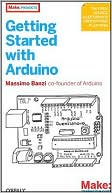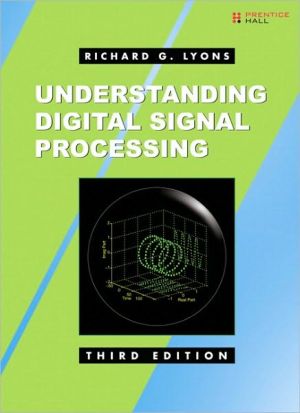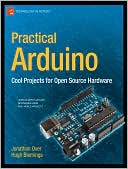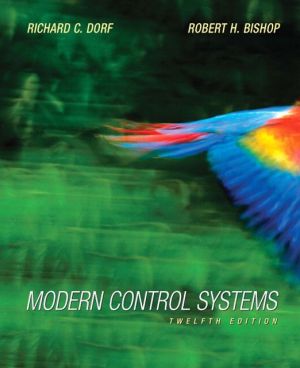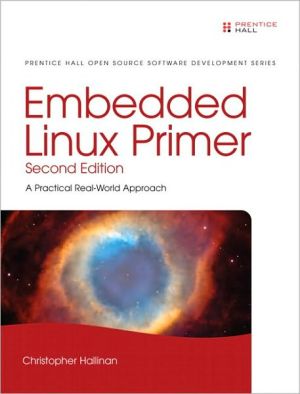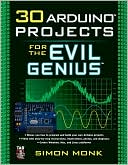Signal and Power Integrity - Simplified
Search in google:
The #1 Practical Guide to Signal Integrity Design—Now Updated with Extensive New Coverage!This book brings together up-to-the-minute techniques for finding, fixing, and avoiding signal integrity problems in your design. Drawing on his work teaching more than five thousand engineers, world-class signal and power integrity expert Eric Bogatin systematically reviews the root causes of all six families of signal integrity problems and shows how to design them out early in the design cycle. This edition’s extensive new content includes a brand-new chapter on S-parameters in signal integrity applications, and another on power integrity and power distribution network design—topics at the forefront of contemporary electronics design.Coverage includes A fully up-to-date introduction to signal integrity and physical designHow design and technology selection can make or break the performance of the power distribution networkExploration of key concepts, such as plane impedance, spreading inductance, decoupling capacitors, and capacitor loop inductancePractical techniques for analyzing resistance, capacitance, inductance, and impedanceSolving signal integrity problems via rules of thumb, analytic approximation, numerical simulation, and measurementUnderstanding how interconnect physical design impacts signal integrityManaging differential pairs and lossesHarnessing the full power of S-parameters in high-speed serial link applicationsEnsuring power integrity throughout the entire power distribution pathRealistic design guidelines for improving signal integrity, and much moreUnlike books that concentrate on theoretical derivation and mathematical rigor, this book emphasizes intuitive understanding, practical tools, and engineering discipline. Designed for electronics industry professionals from beginners to experts it will be an invaluable resource for getting signal integrity designs right the first time, every time.
Preface to the Second Edition xv Preface to the First Edition xvii Acknowledgments xxiii About the Author xxvChapter 1: Signal Integrity Is in Your Future 11.1 What Is Signal Integrity? 21.2 Signal Quality on a Single Net 51.3 Cross Talk 91.4 Rail-Collapse Noise 111.5 Electromagnetic Interference (EMI) 131.6 Two Important Signal Integrity Generalizations 161.7 Trends in Electronic Products 161.8 The Need for a New Design Methodology 221.9 A New Product Design Methodology 231.10 Simulations 241.11 Modeling and Models 271.12 Creating Circuit Models from Calculation 301.13 Three Types of Measurements 351.14 The Role of Measurements 381.15 The Bottom Line 39Chapter 2: Time and Frequency Domains 432.1 The Time Domain 442.2 Sine Waves in the Frequency Domain 462.3 Shorter Time to a Solution in the Frequency Domain 482.4 Sine Wave Features 492.5 The Fourier Transform 512.6 The Spectrum of a Repetitive Signal 532.7 The Spectrum of an Ideal Square Wave 552.8 From the Frequency Domain to the Time Domain 572.9 Effect of Bandwidth on Rise Time 582.10 Bandwidth and Rise Time 622.11 What Does Significant Mean? 632.12 Bandwidth of Real Signals 672.13 Bandwidth and Clock Frequency 682.14 Bandwidth of a Measurement 702.15 Bandwidth of a Model 722.16 Bandwidth of an Interconnect 742.17 The Bottom Line 78Chapter 3: Impedance and Electrical Models 813.1 Describing Signal-Integrity Solutions in Terms of Impedance 823.2 What Is Impedance? 843.3 Real Versus Ideal Circuit Elements 863.4 Impedance of an Ideal Resistor in the Time Domain 883.5 Impedance of an Ideal Capacitor in the Time Domain 893.6 Impedance of an Ideal Inductor in the Time Domain 923.7 Impedance in the Frequency Domain 943.8 Equivalent Electrical Circuit Models 993.9 Circuit Theory and SPICE 1013.10 Introduction to Modeling 1053.11 The Bottom Line 110Chapter 4: The Physical Basis of Resistance 1134.1 Translating Physical Design into Electrical Performance 1144.2 The Only Good Approximation for the Resistance of Interconnects 1154.3 Bulk Resistivity 1184.4 Resistance per Length 1194.5 Sheet Resistance 1214.6 The Bottom Line 124Chapter 5: The Physical Basis of Capacitance 1275.1 Current Flow in Capacitors 1285.2 The Capacitance of a Sphere 1305.3 Parallel Plate Approximation 1315.4 Dielectric Constant 1335.5 Power and Ground Planes and Decoupling Capacitance 1355.6 Capacitance per Length 1385.7 2D Field Solvers 1435.8 Effective Dielectric Constant 1465.9 The Bottom Line 150Chapter 6: The Physical Basis of Inductance 1516.1 What Is Inductance? 1516.2 Inductance Principle #1: There Are Circular Rings of Magnetic-Field Lines Around All Currents 1526.3 Inductance Principle #2: Inductance Is the Number of Webers of Field Line Rings Around a Conductor per Amp of Current Through It 1546.4 Self-Inductance and Mutual Inductance 1566.5 Inductance Principle #3: When the Number of Field Line Rings Around a Conductor Changes, There Will Be a Voltage Induced Across the Ends of the Conductor 1586.6 Partial Inductance 1616.7 Effective, Total, or Net Inductance and Ground Bounce 1676.8 Loop Self- and Mutual Inductance 1736.9 The Power-Distribution Network (PDN) and Loop Inductance 1786.10 Loop Inductance per Square of Planes 1836.11 Loop Inductance of Planes and Via Contacts 1846.12 Loop Inductance of Planes with a Field of Clearance Holes 1876.13 Loop Mutual Inductance 1886.14 Equivalent Inductance of Multiple Inductors 1896.15 Summary of Inductance 1916.16 Current Distributions and Skin Depth 1936.17 High-Permeability Materials 2026.18 Eddy Currents 2046.19 The Bottom Line 206Chapter 7: The Physical Basis of Transmission Lines 2097.1 Forget the Word Ground 2107.2 The Signal 2117.3 Uniform Transmission Lines 2127.4 The Speed of Electrons in Copper 2147.5 The Speed of a Signal in a Transmission Line 2157.6 Spatial Extent of the Leading Edge 2197.7 “Be the Signal” 2207.8 The Instantaneous Impedance of a Transmission Line 2247.9 Characteristic Impedance and Controlled Impedance 2277.10 Famous Characteristic Impedances 2307.11 The Impedance of a Transmission Line 2337.12 Driving a Transmission Line 2387.13 Return Paths 2417.14 When Return Paths Switch Reference Planes 2447.15 A First-Order Model of a Transmission Line 2577.16 Calculating Characteristic Impedance with Approximations 2627.17 Calculating the Characteristic Impedance with a 2D Field Solver 2657.18 An n-Section Lumped Circuit Model 2707.19 Frequency Variation of the Characteristic Impedance 2787.20 The Bottom Line 279Chapter 8: Transmission Lines and Reflections 2818.1 Reflections at Impedance Changes 2828.2 Why Are There Reflections? 2848.3 Reflections from Resistive Loads 2888.4 Source Impedance 2908.5 Bounce Diagrams 2928.6 Simulating Reflected Waveforms 2958.7 Measuring Reflections with a TDR 2958.8 Transmission Lines and Unintentional Discontinuities 2998.9 When to Terminate 3018.10 The Most Common Termination Strategy for Point-to-Point Topology 3048.11 Reflections from Short Series Transmission Lines 3068.12 Reflections from Short-Stub Transmission Lines 3098.13 Reflections from Capacitive End Terminations 3118.14 Reflections from Capacitive Loads in the Middle of a Trace 3148.15 Capacitive Delay Adders 3178.16 Effects of Corners and Vias 3198.17 Loaded Lines 3258.18 Reflections from Inductive Discontinuities 3278.19 Compensation 3318.20 The Bottom Line 334Chapter 9: Lossy Lines, Rise-Time Degradation, and Material Properties 3379.1 Why Worry About Lossy Lines? 3389.2 Losses in Transmission Lines 3409.3 Sources of Loss: Conductor Resistance and Skin Depth 3429.4 Sources of Loss: The Dielectric 3469.5 Dissipation Factor 3519.6 The Real Meaning of Dissipation Factor 3549.7 Modeling Lossy Transmission Lines 3609.8 Characteristic Impedance of a Lossy Transmission Line 3679.9 Signal Velocity in a Lossy Transmission Line 3699.10 Attenuation and the dB 3719.11 Attenuation in Lossy Lines 3769.12 Measured Properties of a Lossy Line in the Frequency Domain 3859.13 The Bandwidth of an Interconnect 3909.14 Time-Domain Behavior of Lossy Lines 3979.15 Improving the Eye Diagram of a Transmission Line 4009.16 Pre-emphasis and Equalization 4029.17 The Bottom Line 403Chapter 10: Cross Talk in Transmission Lines 40510.1 Superposition 40610.2 Origin of Coupling: Capacitance and Inductance 40710.3 Cross Talk in Transmission Lines: NEXT and FEXT 40910.4 Describing Cross Talk 41110.5 The SPICE Capacitance Matrix 41310.6 The Maxwell Capacitance Matrix and 2D Field Solvers 41710.7 The Inductance Matrix 42410.8 Cross Talk in Uniform Transmission Lines and Saturation Length 42510.9 Capacitively Coupled Currents 43110.10 Inductively Coupled Currents 43510.11 Near-End Cross Talk 43810.12 Far-End Cross Talk 44110.13 Decreasing Far-End Cross Talk 44810.14 Simulating Cross Talk 45110.15 Guard Traces 45710.16 Cross Talk and Dielectric Constant 46410.17 Cross Talk and Timing 46610.18 Switching Noise 46910.19 Summary of Reducing Cross Talk 47310.20 The Bottom Line 474Chapter 11: Differential Pairs and Differential Impedance 47511.1 Differential Signaling 47611.2 A Differential Pair 48011.3 Differential Impedance with No Coupling 48211.4 The Impact from Coupling 48611.5 Calculating Differential Impedance 49311.6 The Return-Current Distribution in a Differential Pair 49611.7 Odd and Even Modes 50211.8 Differential Impedance and Odd-Mode Impedance 50711.9 Common Impedance and Even-Mode Impedance 50811.10 Differential and Common Signals and Odd- and Even-Mode Voltage Components 51111.11 Velocity of Each Mode and Far-End Cross Talk 51311.12 Ideal Coupled Transmission-Line Model or an Ideal Differential Pair 51911.13 Measuring Even- and Odd-Mode Impedance 52011.14 Terminating Differential and Common Signals 52211.15 Conversion of Differential to Common Signals 52911.16 EMI and Common Signals 53411.17 Cross Talk in Differential Pairs 53911.18 Crossing a Gap in the Return Path 54211.19 To Tightly Couple or Not to Tightly Couple 54411.20 Calculating Odd and Even Modes from Capacitance- and Inductance-Matrix Elements 54611.21 The Characteristic Impedance Matrix 55011.22 The Bottom Line 553Chapter 12: S-Parameters for Signal Integrity Applications 55512.1 S-Parameters, the New Universal Metric 55512.2 What Are S-Parameters? 55712.3 Basic S-Parameter Formalism 55912.4 S-Parameter Matrix Elements 56212.5 Simulating Return and Insertion Loss 56712.6 A Transparent Interconnect 57012.7 Changing the Port Impedance 57312.8 The Phase of S21 for a Uniform 50-Ohm Transmission Line 57412.9 The Magnitude of S21 for a Uniform Transmission Line 57712.10 Coupling to Other Transmission Lines 58212.11 Insertion Loss for Non-50-Ohm Transmission Lines 58912.12 Data-Mining S-Parameters 59412.13 Single-Ended and Differential S-Parameters 59612.14 Differential Insertion Loss 60112.15 The Mode Conversion Terms 60512.16 Converting to Mixed-Mode S-Parameters 60712.17 Time and Frequency Domains 60912.18 The Bottom Line 613Chapter 13: The Power Distribution Network (PDN) 61513.1 The Problem 61513.2 The Root Cause 61813.3 The Most Important Design Guidelines for the PDN 62013.4 Establishing the Target Impedance Is Hard 62113.5 Every Product Has a Unique PDN Requirement 62913.6 Engineering the PDN 63113.7 The VRM 63313.8 Simulating Impedance with SPICE 63513.9 On-die Capacitance 63713.10 The Package Barrier 63913.11 The PDN with No Decoupling Capacitors 64413.12 The MLCC Capacitor 64613.13 The Equivalent Series Inductance 65013.14 Approximating Loop Inductance 65213.15 Optimizing the Mounting of Capacitors 66113.16 Combining Capacitors in Parallel 66713.17 Engineering a Reduced Parallel Resonant Peak by Adding More Capacitors 67313.18 Selecting Capacitor Values 67513.19 Estimating the Number of Capacitors Needed 68113.20 How Much Does a nH Cost? 68313.21 Quantity or Specific Values? 68713.22 Sculpting the Impedance Profiles: The Frequency Domain Target Impedance (FDTI) Method 69213.23 When Every pH Counts 69913.24 Location, Location, Location 70313.25 When Spreading Inductance Is the Limitation 70713.26 The Chip View 71013.27 Bringing It All Together 71313.28 The Bottom Line 717Appendix A: 100 General Design Guidelines to Minimize Signal-Integrity Problems 719Appendix B: 100 Collected Rules of Thumb to Help Estimate Signal-Integrity Effects 727Appendix C: Selected References 739Index 741

